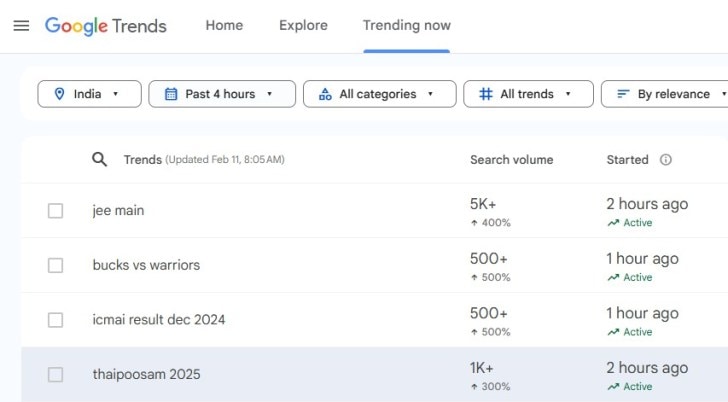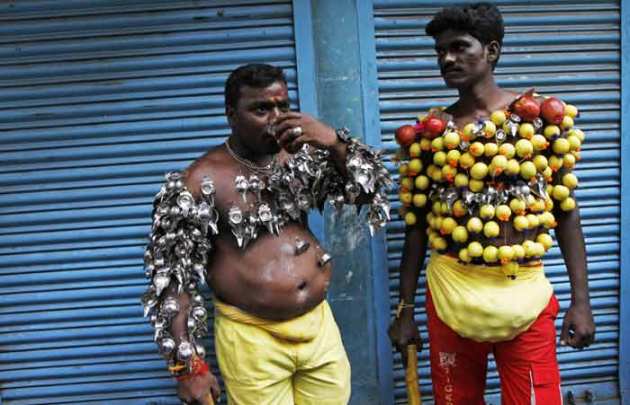Thaipusam 2025 Date and Time: Thaipusam, also known as Thai Poosam, is a Hindu festival celebrated to the earnour Lour Murugan (alportthe Hindu god of war, victory, and wisdom, while also being a symbol of courage, determination, and spiritual growth.
The festival is widely celebrated by the Tamil community in Tamil Nadu India and across the world, especially in Sri Lanka, Singapore, Malaysia, and more.
 On Tuesday, February 11, 2025, “Thaipusam 2025” is a trending search term on Google Search. (Screenshot)
On Tuesday, February 11, 2025, “Thaipusam 2025” is a trending search term on Google Search. (Screenshot)
People are eager to learn about the rituals, events, and traditions associated with Thaipusam, which typically includes colourful processions and acts of devotion.
Today marks the celebration of Thai Poosam 2025; here’s everything you need to know about this significant festival.
Thaipusam 2025: Date and Timings
The name “Thaipusam” is a combination of “Thai” (the Tamil month) and “Poosam,” the star at its highest point during the festival.
It is celebrated on the full moon in the Tamil month of Thai, and this year it is being celebrated on Tuesday, February 11, 2025with auspicious muhurta/timings for the festival, according to DrikPanchang, mentioned below:
- Poosam Nakshatram Starts on February 10, 2025, at 06:01 PM.
- Poosam Nakshatram Ends on February 11, 2025, at 06:34 PM.
Thaipusam 2025: Significance and Celebrations
This festival commemorates the occasion when Lord Murugan received the vel spear, the heavenly weapon, from his mother, Goddess Parvati.
Story continues below this ad
Lord Murugan vanquished the evil demon Surapadma with this celestial weapon, which represents power, devotion, faith, righteousness, and the victory of good over evil.
Devotees demonstrate their devotion and gratitude to Lord Murugan through various rituals and practices, which often include fasting and prayers as a form of spiritual purification and dedication.
 Some devotees engage in body piercing with hooks, needles, and the Vel itself, signifying their commitment and willingness to endure pain for their faith. (Source: AP Photo)
Some devotees engage in body piercing with hooks, needles, and the Vel itself, signifying their commitment and willingness to endure pain for their faith. (Source: AP Photo)







